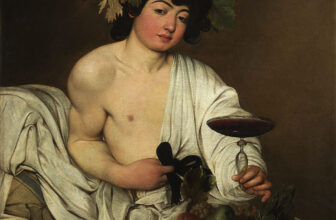
A Tale of Color, Colonialism, and Cultural Gaze
There are few paintings in the history of art that resonate as deeply and powerfully across cultures and centuries as Women of Algiers in Their Apartment. This iconic work, originally painted by Eugène Delacroix in 1834, and later reimagined by Pablo Picasso in the 1950s, stands at the confluence of East and West, art and empire, femininity and fantasy. A masterpiece that has captured imaginations for nearly two centuries, the painting is more than just an exquisite visual composition, it is a rich, complex narrative filled with historical tension, cultural commentary, and artistic innovation.
But what does Women of Algiers in Their Apartment truly mean? Who were the minds behind it? What story does it tell, and what kind of art does it represent? Let’s journey into the vibrant interiors of Algiers and uncover the story behind this extraordinary piece of art.
Who Painted Women of Algiers in Their Apartment?
The original Women of Algiers in Their Apartment was painted by Eugène Delacroix, a leading figure of the French Romantic movement. Delacroix created the piece in 1834 after a diplomatic visit to North Africa. He was part of a French diplomatic mission to Morocco, and during his journey, he had a brief but unforgettable stay in Algiers (then under Ottoman rule), just two years after France had invaded and colonized the city.
The painting is widely regarded as one of Delacroix’s masterpieces and a hallmark of 19th-century Orientalist art. It was created after he was permitted, unusually for a European man at the time, to enter a harem, an inner sanctum of a home where Muslim women lived secluded from the public eye. The experience deeply affected Delacroix, inspiring him to produce what would become one of the most iconic depictions of “the Orient” in European art.
More than a century later, Pablo Picasso, one of the most influential artists of the 20th century, revisited Delacroix’s painting in a series of 15 reinterpretations between 1954 and 1955. Picasso’s Women of Algiers (Les Femmes d’Alger) series was both a tribute to Delacroix and an exploration of his own artistic obsessions, including themes of war, love, loss, and the female form.
What Is the Meaning of Women of Algiers in Their Apartment?
At its surface, Women of Algiers in Their Apartment appears to depict a calm, intimate domestic scene: three or four women reclining in a richly decorated room, dressed in colorful robes, their surroundings adorned with exotic textiles and artifacts. Yet the meaning runs far deeper.
Delacroix’s painting captures the tension between reality and fantasy, between documentary and desire. On one hand, it is an attempt to realistically portray a moment in a culturally specific context, a rare European glimpse into an Algerian harem. On the other hand, it plays into the Western imagination of the “Orient” as a place of sensuality, mystery, and decadence.
In this duality lies the painting’s enduring power and controversy. It reflects a moment when European colonialism was expanding, and with it, the European gaze upon the “exotic” East. The painting is both a reflection of Delacroix’s personal fascination with North Africa and a product of Orientalism, a term later popularized by Edward Said to describe the West’s romanticized, often distorted representations of Eastern cultures.
Picasso’s reinterpretation in the 1950s brought a new layer of meaning. Created shortly after the death of his friend and rival Henri Matisse, Picasso’s series was a meditation on the legacy of painting, female form, and violence. Some scholars also interpret his versions as politically charged responses to the Algerian War of Independence (1954–1962), which was unfolding at the time.
What Is the Story Behind Women of Algiers in Their Apartment?
The story of the original painting begins in 1832, during Delacroix’s visit to North Africa. When he arrived in Algiers, he was fascinated by the city’s architecture, culture, and people. Delacroix was particularly drawn to the world of the harem, which to European men of his time remained an inaccessible and therefore tantalizing mystery.
Through a rare connection, possibly with the help of a French consul or merchant’s wife, Delacroix was allowed to briefly enter a harem and observe the women there. He made quick sketches and notes, which he later used to construct the finished painting in his studio in Paris.
In the painting, three women recline gracefully on cushions in a richly furnished room. A black servant stands in the shadows, partially hidden. The women wear luxurious garments, their expressions pensive and reserved. The mood is quiet, almost melancholic, not eroticized as one might expect from Orientalist depictions of harems.
Delacroix’s composition defied the then-popular fantasy of harem life as purely sensual and indulgent. Instead, it offered a more nuanced and emotionally layered portrayal. While he was undeniably captivated by the colors, patterns, and mystique of the setting, he didn’t reduce the women to mere objects of desire. There’s a sense of detachment in their expressions, a feeling of boredom or confinement, perhaps reflecting the realities of their seclusion.
When Picasso approached the same subject more than a century later, his approach was more abstract, angular, and emotionally explosive. He took Delacroix’s original figures and fractured them through the lens of Cubism and modernism. His “Women of Algiers” were not passive or melancholic; they were fierce, distorted, almost war-like, symbolizing the chaos of the time and perhaps a changing view of womanhood and power.
What Type of Art Is Women of Algiers in Their Apartment?
Delacroix’s Women of Algiers in Their Apartment is a prime example of Orientalist art, a genre that flourished in the 19th century as European artists, writers, and thinkers became increasingly fascinated with the cultures of the Middle East, North Africa, and Asia. Orientalism was often characterized by romanticized and exotic depictions of life in these regions, and it frequently reflected colonial attitudes.
At the same time, the painting is also a masterpiece of Romanticism, the artistic movement Delacroix championed. Romantic art prioritized emotion, individual experience, dramatic color, and expressive composition over the rationality and order of Neoclassicism. Delacroix’s brushwork, vibrant color palette, and focus on psychological nuance all reflect this Romantic ethos.
Picasso’s reinterpretation belongs to the world of Modernism and more specifically Cubism, a movement he helped pioneer. His Women of Algiers series combines fragmented forms, bold colors, and a reimagining of classical themes through a modern lens. These paintings are not just reinterpretations but transformations, deconstructing and reconstructing the female form, the Orientalist trope, and the art-historical canon itself.
What Is the Subject Matter of Women of Algiers in Their Apartment?
The subject matter centers on women in a secluded, domestic interior, specifically, a harem. The painting portrays a moment of stillness and introspection rather than action. The women’s relaxed postures, the ornate decor, and the interplay of light and shadow evoke a sense of intimacy and complexity.
This domestic scene invites viewers into a space that was typically inaccessible to outsiders, particularly European men. In doing so, it raises questions about voyeurism, privacy, and cultural representation. Are we being offered an authentic glimpse into another culture, or are we witnessing a filtered and romanticized interpretation, shaped by the artist’s Western perspective?
The inclusion of a black servant also introduces themes of race and hierarchy, which were central to the colonial imagination. She is positioned away from the central group, partially hidden and often overlooked in casual readings of the painting, a stark reminder of the racial and social dynamics at play.
In Picasso’s versions, the subject matter becomes more psychological and symbolic. His women are no longer serene, they are explosive, fragmented, and emotionally charged. The domestic space becomes a site of conflict, tension, and transformation.
Where Is Women of Algiers in Their Apartment Located Today?
Eugène Delacroix’s original 1834 painting is housed in the Louvre Museum in Paris, where it remains one of the highlights of the museum’s 19th-century French painting collection. It is often studied and displayed alongside other Orientalist works, serving as a key artifact for understanding the complexities of European engagement with the Islamic world during the colonial era.
Picasso’s Les Femmes d’Alger series, on the other hand, is dispersed across various collections. However, the most famous of his versions, Version O (the final and most elaborate in the series), made headlines in 2015 when it sold at Christie’s for $179.4 million, making it (at the time) the most expensive painting ever sold at auction. That version is now held in a private collection.
Other versions from Picasso’s series can be found in major museums around the world, including the Museo Reina Sofía in Madrid, the Art Institute of Chicago, and the Kunstmuseum Basel, among others.
A Legacy Beyond the Canvas
Women of Algiers in Their Apartment is not just a painting, it is a conversation. A conversation between East and West, between artist and subject, between history and modernity. It invites viewers to question the lines between representation and reality, desire and documentation, tradition and transformation.
Delacroix offered a vivid yet complex image of a world that was both alluring and distant to his audience. Picasso reimagined that world through the fractured lens of modernity, breathing new urgency and intensity into the scene. Together, their works form a powerful dialogue about the role of art in shaping how we see others, and how we see ourselves.
In an era increasingly aware of the politics of image-making and cultural representation, Women of Algiers in Their Apartment continues to challenge and inspire. It reminds us that every painting tells multiple stories, not just of the people depicted, but of the world that created them, and the worlds they continue to influence.




